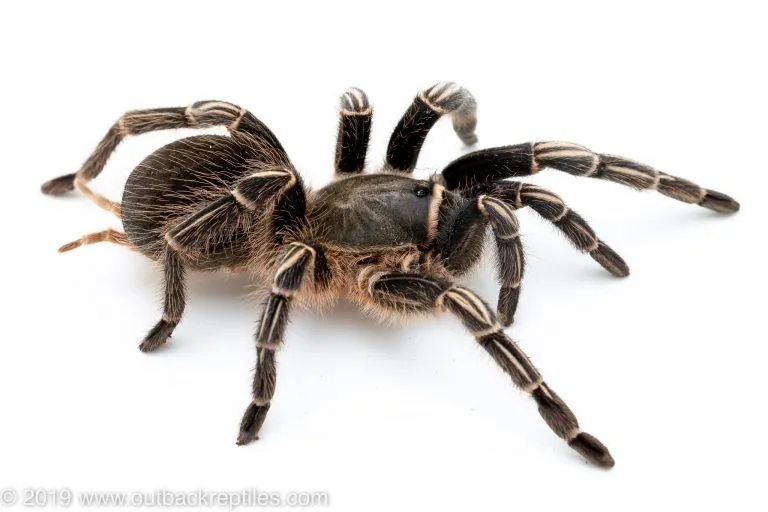Understanding Striped Knee Tarantula Feeding Habits
Feeding a striped knee tarantula (Aphonopelma seemanni) correctly is vital for its health and longevity. These fascinating creatures have specific dietary needs and feeding behaviors that differ from other pets. Understanding these habits is the first step toward providing optimal care. This guide will cover everything from natural diets and prey preferences to feeding techniques and troubleshooting. By following these guidelines, you can ensure your striped knee tarantula thrives in its captive environment, enjoying a healthy and fulfilling life. A well-fed tarantula is a happy tarantula, and knowing how to meet its dietary needs is paramount to its well-being. Providing the right environment, proper food, and understanding their eating habits contribute to a long life span.
Natural Diet in the Wild
In their natural habitat, striped knee tarantulas are opportunistic predators. Their diet mainly consists of insects, but they may also consume small vertebrates like lizards or even small rodents if the opportunity arises. They are ambush predators, meaning they wait patiently for prey to come within striking distance. They then quickly pounce on their target, injecting venom to immobilize it. The tarantula’s natural diet varies based on the availability of prey in their environment. Understanding their wild diet can help inform feeding practices in captivity, enabling you to replicate their natural food sources and contribute to their overall wellness.
Prey Preferences and Sizes
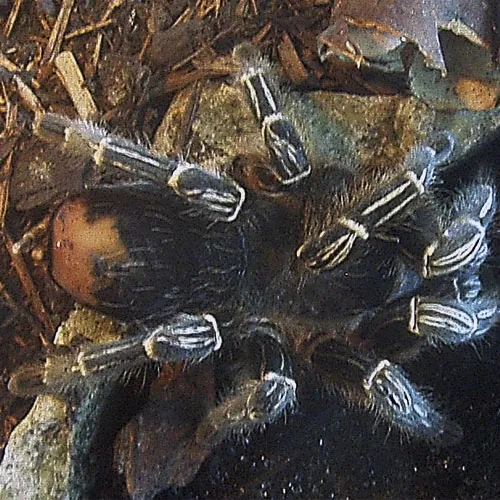
Striped knee tarantulas have preferences when it comes to prey. They generally favor insects that are easy to catch and consume. Crickets, mealworms, and roaches are popular choices. The size of the prey is also crucial; it should be no larger than the tarantula’s abdomen. Overly large prey can stress the tarantula and increase the risk of injury. It’s important to offer a variety of prey to ensure your tarantula receives a balanced diet. Avoid feeding prey that are too fast, difficult to capture, or carry a risk of causing harm. Consider the size of your tarantula and choose prey accordingly, ensuring that the feeding process is safe and effective.
Captive Feeding Guide
Feeding a striped knee tarantula in captivity requires careful planning and execution. Creating a routine, providing a varied diet, and understanding their individual needs will help ensure your pet remains healthy and content. In this section, we will discuss selecting prey, the frequency of feeding, and practical tips for handling and maintaining a clean feeding environment. These aspects of care are essential to mimic their natural behaviors. Following these guidelines is a key part of tarantula husbandry, maximizing your spider’s overall well-being.
Choosing the Right Prey
Choosing appropriate prey is the first critical step in feeding your striped knee tarantula. Ensure the prey is healthy, well-fed (gut-loaded), and free from pesticides. Common feeder insects such as crickets, mealworms, and dubia roaches are readily available and suitable for tarantulas. Always source your insects from reputable suppliers to avoid introducing parasites or diseases to your pet. Variety is crucial, so alternate between different types of insects to provide a balanced diet. This helps in fulfilling the tarantula’s nutritional needs. Proper selection of prey will contribute to your tarantula’s overall health and vitality.
Common Feeder Insects
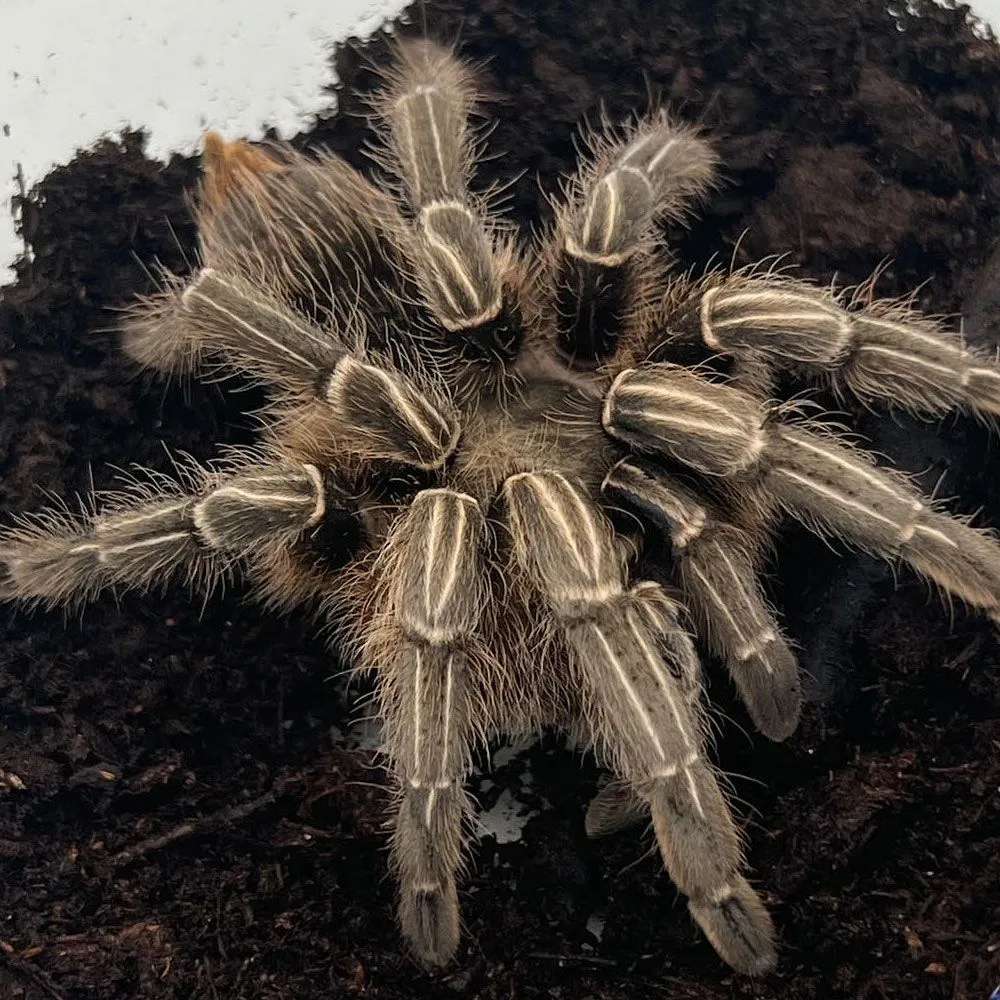
Several feeder insects are popular choices for tarantula owners. Crickets are readily available and provide a good source of protein. Mealworms are easy to raise and offer a slower-moving prey option. Dubia roaches are highly nutritious and less likely to burrow, making them a convenient choice. When selecting feeder insects, consider their size and nutritional value. Always gut-load your feeder insects before feeding them to your tarantula. This process involves feeding the insects a nutritious diet, so they pass those nutrients on to the tarantula. A well-fed prey item ensures that your tarantula receives essential vitamins and minerals.
Alternative Food Options
While insects form the bulk of a tarantula’s diet, some alternative food options can provide variety and nutritional benefits. Pinkie mice (baby mice) can be offered occasionally to adult tarantulas. However, these should be given sparingly due to their high fat content. Pre-killed prey is a safer option, especially for beginners, as it eliminates the risk of the prey harming the tarantula. Always ensure any alternative food options are sourced ethically and are appropriate for the size and dietary needs of your tarantula. Consult with experienced keepers or a veterinarian familiar with arachnids to determine the best food options for your pet.
Feeding Frequency and Portion Sizes
The feeding frequency and portion sizes vary depending on the tarantula’s age. Spiderlings, or young tarantulas, need to be fed more frequently, typically two to three times a week. As they grow, the frequency can be reduced. Adult tarantulas can be fed once a week or even less often, depending on their activity level and appetite. Always observe your tarantula’s feeding behavior. If it refuses food, it may be preparing to molt. Overfeeding can lead to health problems. It’s better to slightly underfeed than to overfeed. Adjust the size of the prey to match the tarantula’s body size, ensuring it doesn’t overeat.
Feeding Young Tarantulas
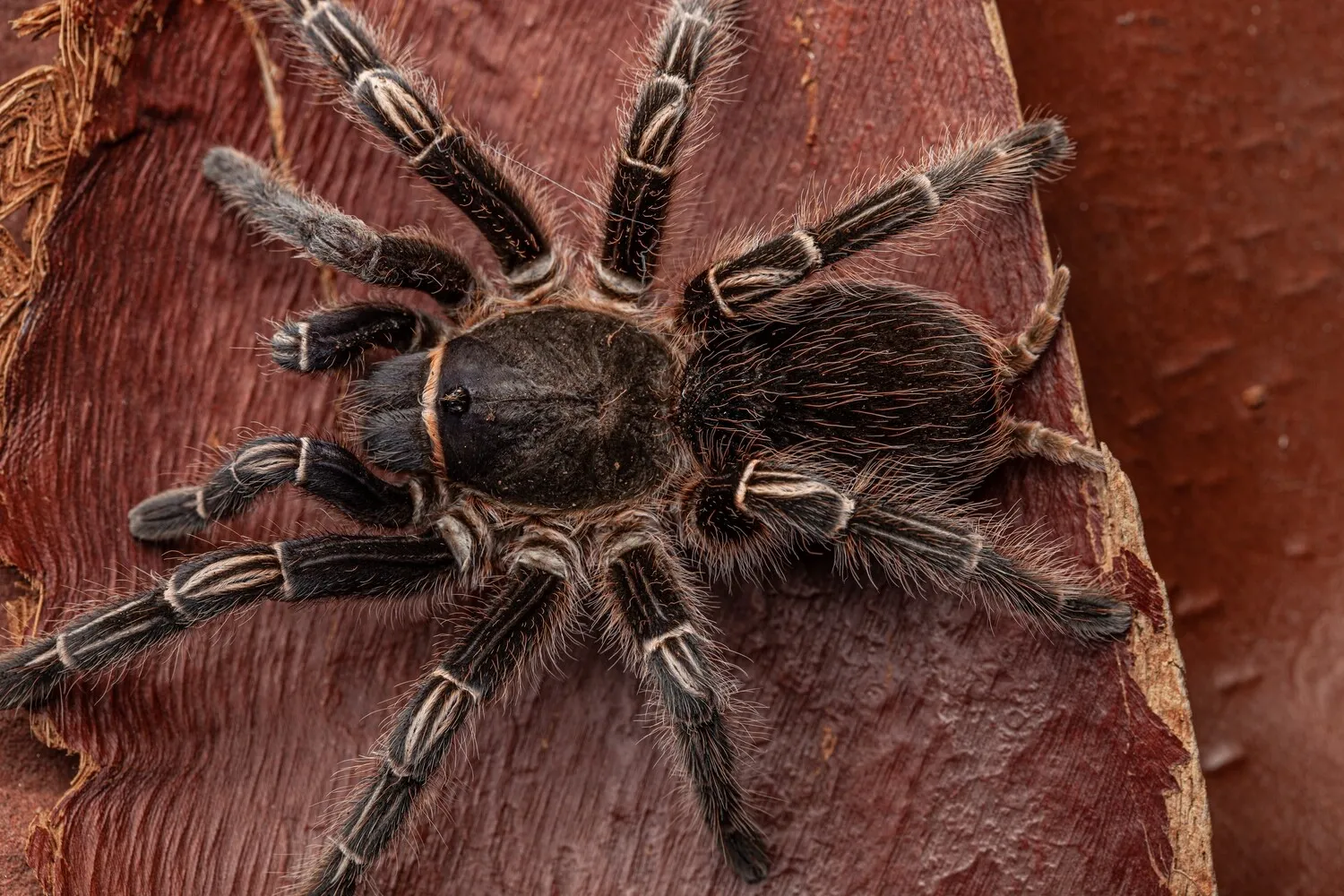
Spiderlings have a higher metabolism and require more frequent feedings. Provide them with appropriately sized prey two to three times a week. Crushed mealworms or small crickets are suitable for young tarantulas. Ensure the prey is not too large, as it can stress the spiderling. Monitor their eating habits and remove any uneaten prey within 24 hours to prevent potential harm. Maintaining a consistent feeding schedule is important. Regular feeding supports rapid growth and development in these early stages of their life. Providing an appropriately sized habitat also contributes to their well-being.
Feeding Adult Tarantulas
Adult striped knee tarantulas generally have slower metabolisms and can be fed less frequently. Once a week or every other week is usually sufficient. Offer larger prey items such as adult crickets or small roaches. Observe the tarantula’s body condition and adjust the feeding schedule as needed. A well-fed adult tarantula will have a plump abdomen. Be mindful of signs like refusal to eat. This can indicate an impending molt or other health issues. Regular assessment and observation of their eating habits are vital to maintaining their health.
Feeding Techniques and Best Practices
Proper feeding techniques and adherence to best practices are essential for ensuring a safe and stress-free feeding experience for both you and your striped knee tarantula. These practices cover how to introduce food, how to handle uneaten prey, and the importance of supplying fresh water. These methods are crucial for mimicking their natural behaviors, contributing to their health. The following tips will ensure that your tarantula remains healthy.
Introducing Prey
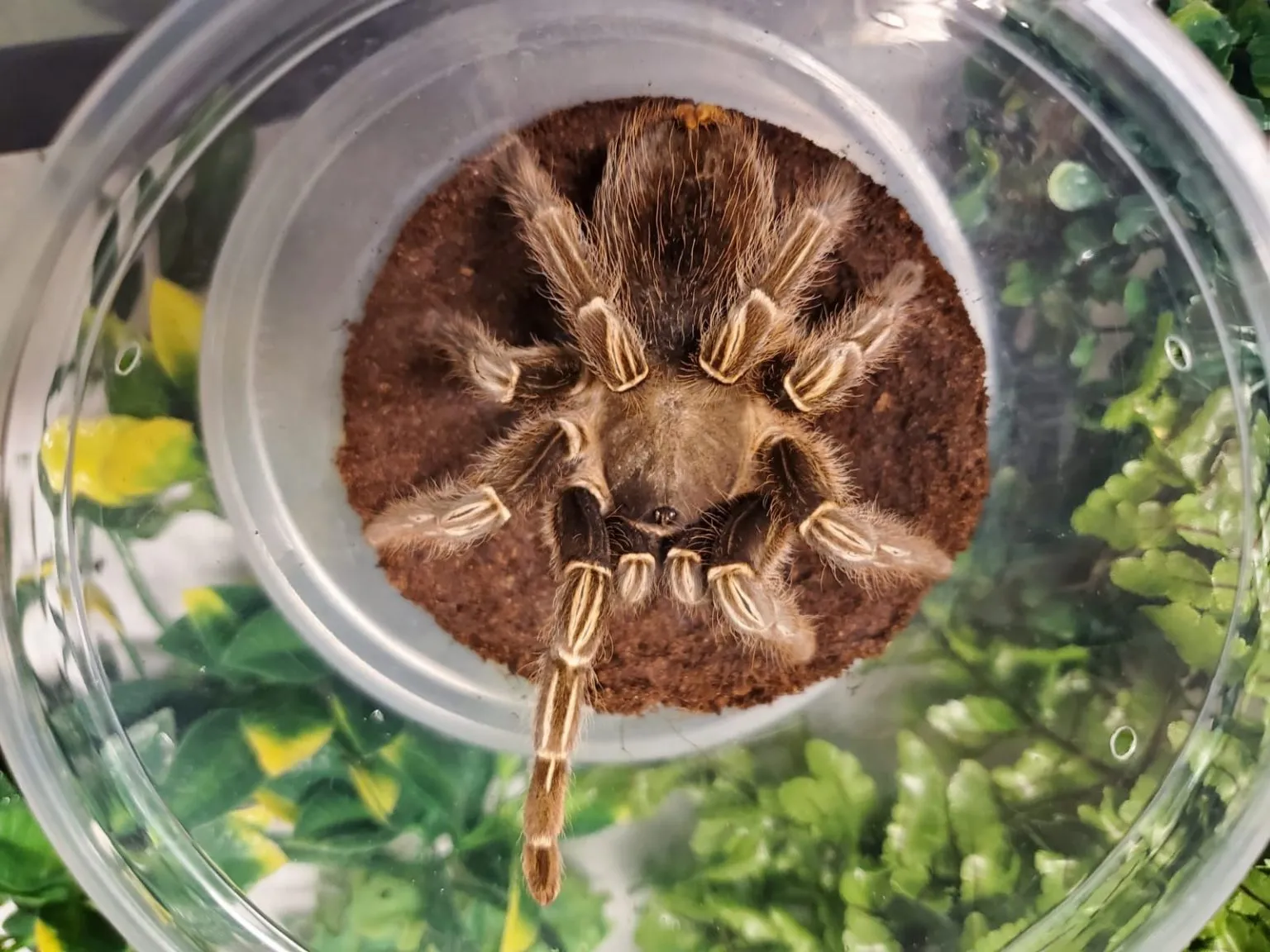
When introducing prey, gently place the feeder insect into the tarantula’s enclosure. Avoid dropping the insect directly onto the tarantula, as this can startle it. Instead, place it near the tarantula or its burrow, allowing the tarantula to hunt. Observe the tarantula’s reaction, and if it doesn’t show immediate interest, leave the prey for a few hours. If the tarantula still doesn’t eat, remove the prey. Many tarantulas are ambush predators, they will wait patiently for the right moment, but it’s crucial not to leave live prey with the tarantula for extended periods.
Removing Uneaten Prey
It’s essential to remove uneaten prey within 24 hours. Live prey can stress the tarantula and may even injure it, particularly during molting. Use a pair of long tweezers to carefully remove the prey. Ensure that you do not disturb the tarantula while doing this. Regularly check the enclosure after feeding to remove any leftover food, preventing the growth of mold and bacteria. Cleaning the enclosure and removing uneaten food is essential for maintaining a healthy habitat for your pet. This also reduces the risk of introducing unwanted pests and parasites into the environment.
Providing Water
Providing fresh water is as important as providing food. Always have a shallow water dish available in the enclosure. Change the water regularly to ensure it remains clean and free of debris. Some tarantulas prefer to drink from the side of their enclosure, so misting the enclosure can also provide a source of hydration. Make sure the water dish is shallow enough to prevent the tarantula from drowning. The availability of water is vital, especially during molting, as it assists with the process. Ensuring a readily available supply of fresh water is fundamental to maintaining the health of your tarantula.
Troubleshooting Feeding Issues
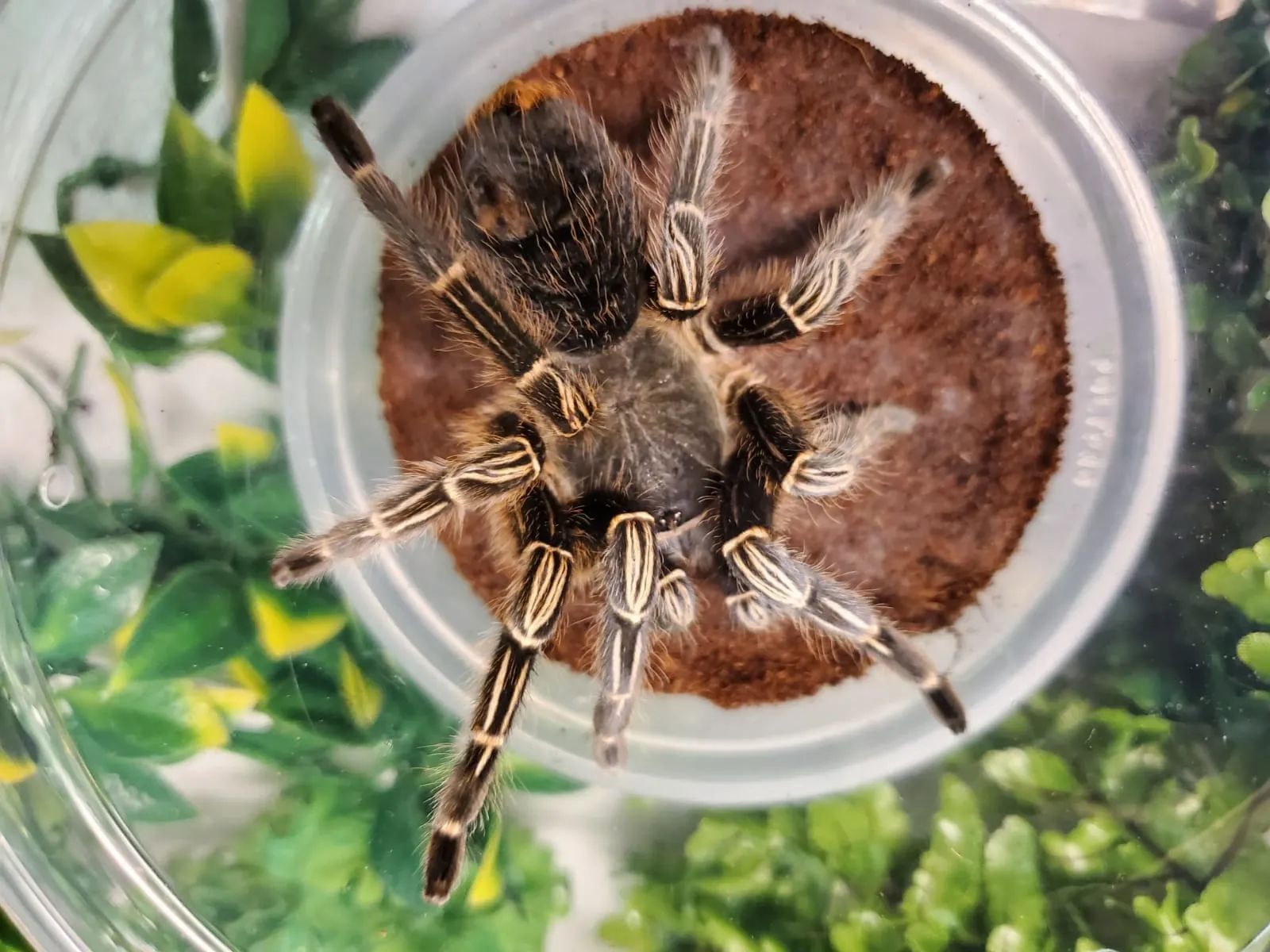
Even with the best care, tarantulas can sometimes experience feeding issues. Understanding the reasons behind these problems and how to resolve them can help you provide the best care. Common issues include refusal to eat, which may indicate an impending molt or other health problems. Here we will discuss these challenges and how to address them. Knowing the cause and remedies of these issues will contribute to the well-being of your pet.
Tarantula Refusal to Eat
If your tarantula refuses to eat, there are a few potential causes. The most common reason is that it is preparing to molt. During this time, tarantulas will often stop eating. Other causes can include environmental stress, illness, or a recent feeding. Check the temperature and humidity levels to ensure they are within the appropriate range. If your tarantula shows other signs of illness or if the refusal to eat persists for an extended period, consult a veterinarian specializing in exotic animals. Always provide a safe environment and try to minimize disturbances.
Preventing Overfeeding
Overfeeding can lead to obesity and health problems in tarantulas. Avoid offering too much food at once, and adjust the feeding schedule based on the tarantula’s age, size, and activity level. It is better to slightly underfeed than to overfeed. Monitor the tarantula’s abdomen; it should be plump but not excessively so. If the tarantula consistently leaves food uneaten, reduce the portion size or feeding frequency. Prevention of overfeeding contributes greatly to a long and healthy life for your striped knee tarantula. A balanced feeding regimen supports its vitality.
Health and Molting
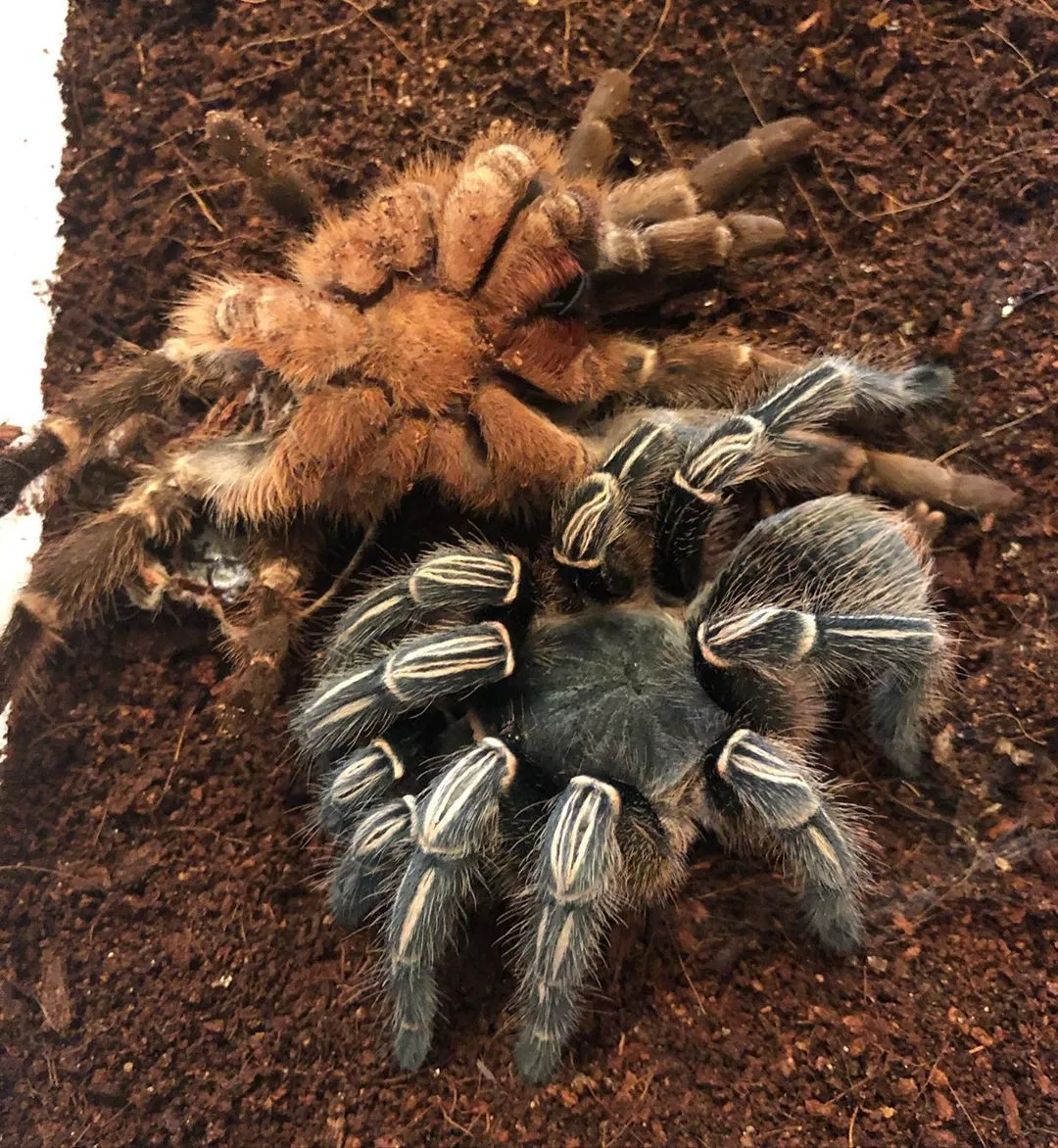
Feeding practices directly impact a tarantula’s health and its ability to molt successfully. Proper nutrition supports healthy growth and the shedding of the exoskeleton. The molting process can be stressful, and a well-nourished tarantula is more likely to handle it without complications. Make sure the tarantula has ample water available before and after molting. If your tarantula has been feeding regularly, it is an indicator that it is in good health. Monitoring the health of the tarantula is essential for their long-term care.
In conclusion, feeding a striped knee tarantula effectively is a fundamental aspect of its care. By understanding its feeding habits, choosing the right prey, and implementing best practices, you can ensure your pet thrives. Following the guidelines presented here will contribute to its well-being, promoting a long and fulfilling life. Remember that each tarantula is an individual, so observe your pet closely and adjust your feeding strategy accordingly. With proper care and attention, you can enjoy many years with your amazing striped knee tarantula.
